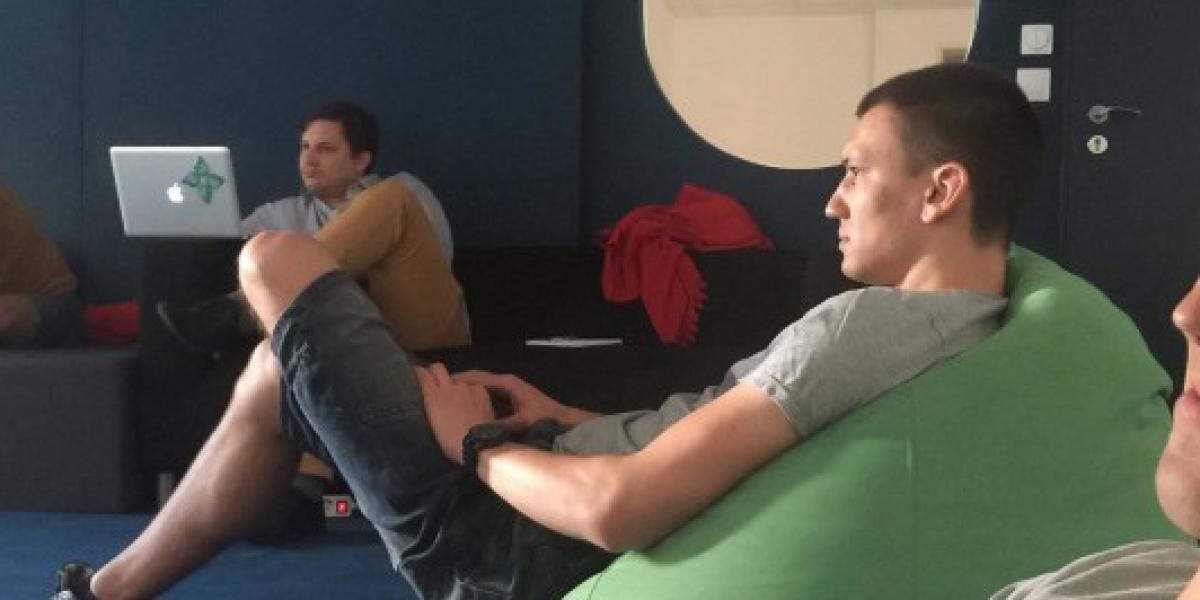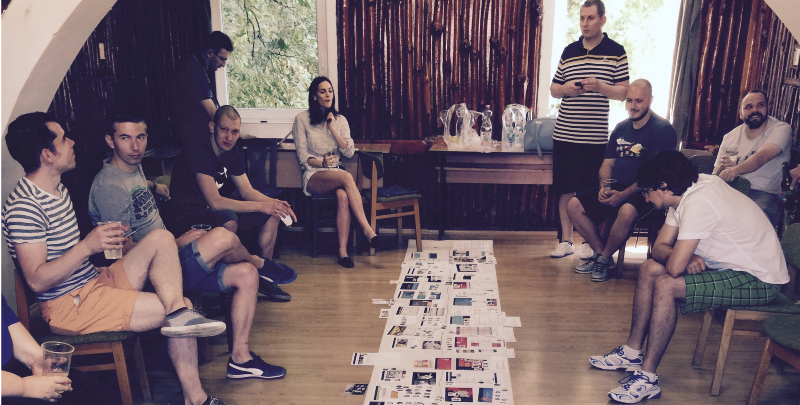Recently we just made a statement again, that our most important practice is the retrospective. This allows team members to form on our functions processes starting from a strain point of view.
Integral Vision
Recently we just made a statement again, that our most important practice is the retrospective.
This allows team members to form on our functions processes starting from a strain point of view. We summarized in 4 points our expectations of the biweekly held retros:
1. The aim of the retro is to form our habits, processes, culture (learning)
2. Give a chance to every participant to express how they felt during the sprint (mood and flow)
3. The retro is an opportunity to reflect on the commitments made in the beginning of the sprint. In storypoints and value (efficiency)
4. With my presence I give an opportunity to others to tell me if they have anything to share with me (to be addressable)
1. The beginning: rhythm
In the first few years I was both the facilitator and an active member of the company retros, which often caused confusion. PP stood for the professional point of view, and I spoke from the customer perspective. He was the one everyone expected an answer from when a technical question arose, and I felt like I must express my thoughts when project or process related topics came up.
It was a great breakthrough when we chose to meet in person for half a day instead of a 30 minutes skype session. The retro and demo became regular, and it got more and more important to have a predictable event. A few years ago we decided to change to biweekly iterations, and Wednesday became the turning-point. In the morning we held the team meetings, which were followed by a common lunch. In the afternoon we started the seance with a corporate retro, thereafter the demo followed, and we closed the day with forecasting. This is the rhythm we still use today.
2. Outsourced facilitation: strain framework
Through Gergő, in Circle 43, I got to know the decision-making method used in Holacracy. It seemed elaborate and too formal in the beginning. I felt it annoying that the facilitator is holding such strict lines, but on the other hand I soon realized how efficient this method is to give focus to the gathered tension under controlled circumstances.
We made an agreement with Gergő, that he is going to moderate our retrospectives, and this way the facilitation at last becomes neutral. He had a good sense to stop me and remind me on the rules each time I tried to grab the word. It was at the same time frustrating and felt like release. A cuff for my ego, salve for the team. More and more topics came up, and the retro got a clear outcome.
3. Treating emotions
The next impulse came after introducing NVC. To focus attention on four components: observation, feelings, needs, and request, helped us handling communications problems. Our conflict management ability improved. We started to prove our aspects more efficient both with clients and within the team while trust also became more stable. To recognize needs and to formulate requests has an energizing power. It gives an opportunity to stop never ending yammering, and to be more clear with each other. Somehow the hallway gossips also lost their interest from this point.
4. Personalization and efficiency
It is hard for me to handle efficiency when I concentrate on the personal. When I am inquisitive about commitment, the personal problems may seem like explanations. It's like these two exclude each other.
Both aspects are very important. It was a great recognition when we drafted that they both need to be present at the same time. During the retro we pay attention on both topics: we ask how everyone felt in the sprint, and we give an opportunity to reflect on tasks assumed in the beginning of the sprint, in terms of points and delivered value.
5. Connected vs problem focused
The main starting question on the retros was for a long time, whether anyone has any topic or any frustration to share. Problems got focus instead of reviewing the whole period. With this focus we forgot to pay attention on what went good, and we did not strengthen that.
The biweekly stop has also another important function: to celebrate the great results, and charge up before the next run.
If I am inquisitive about what value I created, how did I feel, what would I like to thank the others for, then the focus remains on the retro and not the problems. This way we can strengthen what went well, and meanwhile we also solve the problems.
We have collected some facilitating questions which can be useful during the retro:
- Which values did I bring to this sprint?
- How did I feel in this sprint?
- Could I accomplish my tasks in the sprint?
- Did I meet any blocking factors?
- What would help me to solve this problem?
- Would I like to thank anyone for anything?
- Could I concentrate on my work?
- Did I have a flow experience?
- Did I have the possibility to discuss everything what I needed during the sprint?
- How was the cooperation with the others?
- Did I know my tasks every day?
- Was there any meeting I could have skipped?
- Was there any meeting I should have attended?
- Did I get the maintenance to be effective in the sprint and focus on my work?
- What was worst in the sprint?
- When did I feel best?
- How much freedom did I have in the sprint?
- Did I like my tasks?
- How predictable did the company work in this sprint?
This is how far we got in this process. We are more than happy to learn about your experiences. Please share with us on [email protected] email, or drop a comment under the Facebook post.

Share with your friends!